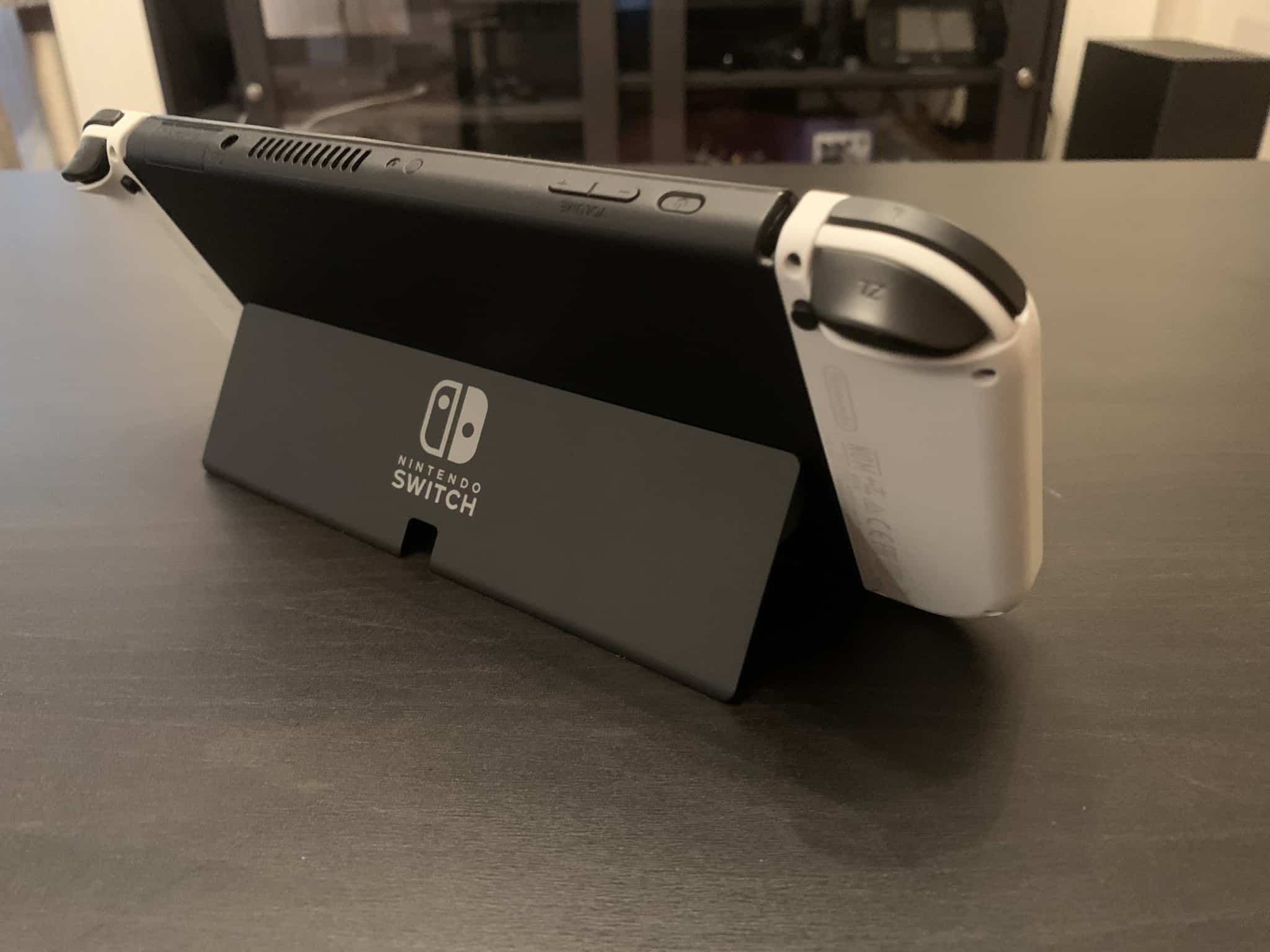The Nintendo Switch OLED model was announced early this year to muted fanfare, and not entirely for legitimate reasons. Nintendo fans had for months been churning the rumour mill, spreading ideas about what a “Switch Pro” might look like and how much more powerful it might be. So when Nintendo’s reveal didn’t compare to everyone’s imagination, it stole a little bit of the announcement’s thunder.
But now that the console is actually here, let’s not judge it by the unfounded rumours that preceded it, but by what it actually is. The OLED model is a minor upgrade with a minor price boost to match, which means that what you see is largely what you get.
It’s important to keep in mind that Nintendo is not marketing this as a mid-gen console. There is no change to the processor or RAM, nor the battery life. Nintendo employees have even admitted that if the OLED model’s main attraction, the screen, is not important to you, then it may not be for you. Beyond the obvious difference that the OLED screen presents, the upgraded functions are minimal and are more “nice to haves”, not “must-haves”.
Specifically, these are the upgrades: a 7.0 inch OLED screen (Slightly larger than the original’s 6.2 inches), a sturdier adjustable stand, better built-in speakers, 64 GB of storage (up from 32GB), and an Ethernet port on the dock. In Australia, the OLED model will run you about $539, whereas the original Switch is currently selling for $449.
There are also a few slight design changes to the Switch casing and dock that make it a nicer machine to look at. The main feature is obviously the new screen, though, so let’s focus on that first.

How about that OLED screen?
Simply put, it’s beautiful. It’s impressive right out of the box, with a slightly curved edge and glossy finish. It looks the part of a fancier model, especially if you choose to go with the sleek white version of the model. Side-by-side, the original almost looks like a cheap toy in comparison.

In action, the OLED screen really makes a difference too. Even though it might still only play in 720p in handheld mode, it’s hard to even notice when the colours are so vibrant. It depends on the game being played of course, but you can bet that if it has a bright colour palette that it’ll look like a million bucks on the OLED screen. I compared multiple titles between the original Switch and the OLED model, including Hyrule Warriors: Age of Calamity, Animal Crossing: New Horizons, Sonic Mania, and even some retro games available through Nintendo Switch Online. In fact, retro games look especially good. As many of them tended to use brighter colours to make up for their various other graphical limitations, it makes sense. Black levels were noticeably better across the board, so those games using darker colours will see their visuals boosted too.
With the handheld screen getting such a nice upgrade, it’s disappointing this new Switch still doesn’t offer 4K support in docked mode when the entire point of this model appears to be improving the visual experience. Audiences were already critical of the original Switch for not launching with 4K, and the longer Nintendo goes without offering it, the more out of date it will appear. And for those who play their Switch mainly in docked mode, the OLED model doesn’t offer much more to entice them.
“It’s impressive right out of the box, with a slightly curved edge and glossy finish.”
You wouldn’t think a difference of less than an inch would mean much, but it does. The screen now goes almost to the very edge of the Switch, which looks far better aesthetically speaking, and makes it hard to look back at the original Switch’s screen without wondering how you’d never noticed how much space had been wasted in the original model.
The OLED still has a bit of wasted space in a smaller black outline around the screen, with no obvious reason it should have to be there. Regardless though, now that I’ve gotten a taste for the beautiful OLED screen, I don’t think I can go back.

My next favourite improvement is the adjustable stand, which is leagues better than the OG Switch. Where the OG’s stand feels flimsy, like it could snap off at any moment, the new stand is sturdy and can be adjusted to any angle. I never played my OG Switch using its stand because the angle was always awkward – it assumed that you would be sitting, I suppose, on a chair about a meter away from the tiny screen. But now I can play like a normal person, peering down at it from directly above it. Huzzah!
Next is the upgrade to 64 GB from 32GB, which while nice, isn’t a huge deal when most dedicated gamers will already own an SD card (Both the original and the OLED model can support microSDHC or microSDXC cards up to 2TB).
As for the Nintendo Switch OLED model’s advertised onboard speakers with enhanced audio, I’ll have to take their word for it. Despite trying my best, I wasn’t able to find any specific specifications regarding these speakers or in what way they are enhanced. For what it’s worth, the OLED model does sound a bit crisper, but the difference is subtle enough that if you told me I was imagining it, I would consider believing you. The speaker holes on the Switch itself is definitely larger, though.
Lastly, the ethernet port on the dock is a great option for those who value a strong internet connection. Nintendo, in general, is not the best when it comes to stable multiplayer servers, so the extra stability provided by an ethernet connection could make all the difference. But if you don’t play online, then the port will still be useful when downloading digital games – just dock the console and watch that download time get cut in half.
So no mid-gen console, huh?
“… to get only a minor upgrade with no changes to processing power can’t help but underwhelm, at least a little.”
Although Nintendo is obviously not to blame for the ‘Switch Pro’ rumours that had everybody hyped up, it’s perhaps understandable that gamers were expecting something more than the OLED model. Mid-gen consoles are quickly becoming an industry standard for game consoles, and with 2021 marking 4 years since the Switch’s launch, now is about the time we would have expected one to come out. So to get only a minor upgrade with no changes to processing power can’t help but underwhelm, at least a little.
Having used its opportunity to release a middle console on this OLED model, it remains up in the air if Nintendo plans on developing a mid-gen console at all. Normally, Nintendo’s loyal fans don’t care so much if the company’s consoles don’t quite compare to the other’s in terms of specs, but it’s hard to imagine that the Switch’s current horsepower is going to last it all the way until the next-gen. As time goes on, I expect the grumbling will begin to get louder and louder.
The Verdict
If you don’t already own a Switch, deciding on whether or not to get the OLED model is likely going to be very simple for you. Do you care about a slightly nicer, more vibrant screen? If you do, and you don’t mind spending the extra $90, you might as well get it. It’s simply a slightly better version of the console, and the screen is genuinely beautiful. If you don’t care about such things, though, you aren’t missing out on anything essential. It’s simply one more option for you when you go shopping for a Switch.
If you do own a Switch, well, that’s going to be a harder purchase to justify. Even if you trade in your current console, you’ll still be paying a fair bit for the same console again but with prettier colours. Unless you’re really loving that screen, stay strong, and don’t give into FOMO.











